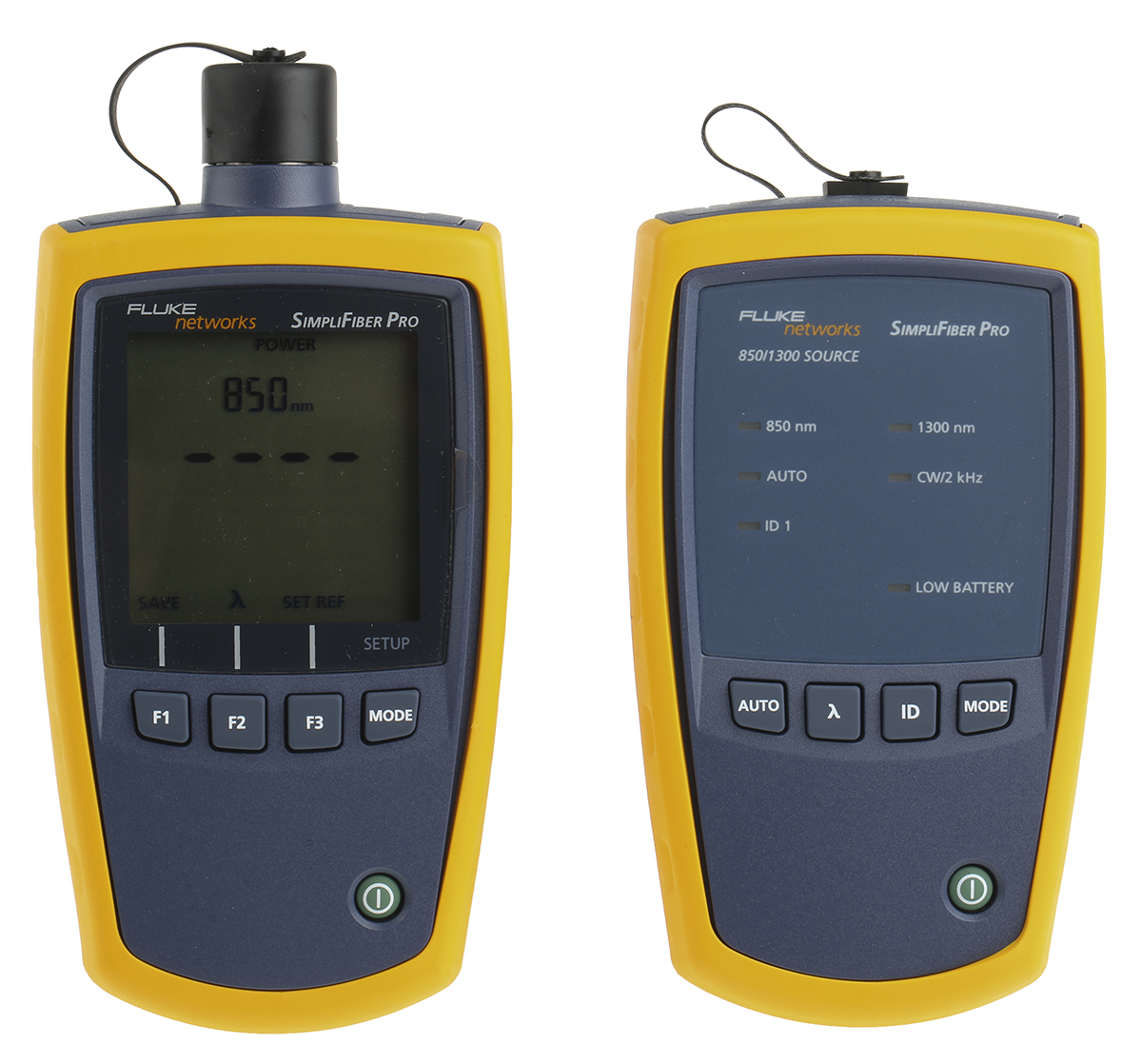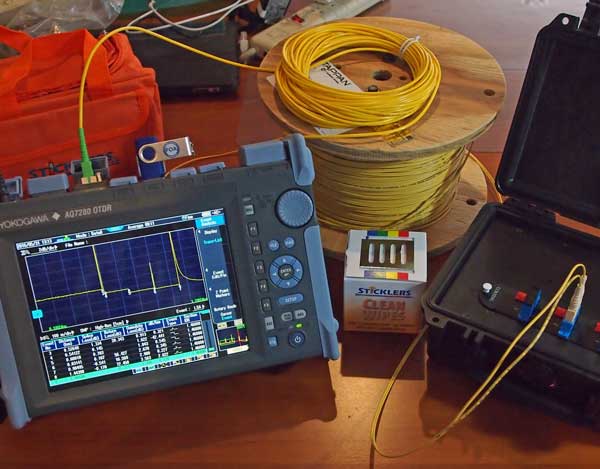A Comprehensive Overview to Optical Measurement System for Fiber Evaluation
When it concerns fiber evaluation, comprehending optical dimension systems is vital for examining efficiency and ensuring high quality. You'll discover vital techniques like interferometry and spectroscopy, which help you determine vital parameters. However there's even more to it than simply these methods; grasping depletion dimension strategies can significantly affect your network's effectiveness. As you navigate through this guide, you'll uncover insights that can transform your method to fiber optics.
Understanding Optical Measurement Solutions
When you check out optical measurement systems, you'll find they're crucial for assessing fibers with precision. These systems use light to examine numerous features of fibers, consisting of size, refractive index, and harmony. By using strategies like interferometry and spectroscopy, you can obtain beneficial understandings right into the fiber's properties.You'll discover that these systems are created to decrease mistakes and boost precision, making sure trustworthy information for your analysis. Different configurations, such as single-mode and multi-mode systems, accommodate particular fiber types, permitting you to pick the finest fit for your needs.Moreover, the integration of advanced software devices assists you translate the data successfully, making it less complicated to determine any type of variances or problems. As you investigate much deeper into these measurement systems, you'll value exactly how they streamline the analytical procedure and improve the overall high quality of fiber production and screening.
Secret Criteria for Fiber Analysis
Key specifications for fiber analysis play an essential duty in identifying the quality and performance of fiber optics. When you assess a fiber, you'll intend to concentrate on features such as attenuation, transmission capacity, and modal dispersion. Depletion measures the loss of signal strength as light trips through the fiber. A lower attenuation value indicates much better quality and longer transmission distances - fibre testing equipment.Bandwidth describes the data-carrying capacity of the fiber and is crucial for high-speed communication. You'll need to analyze the bandwidth to assure it meets your application demands. Modal diffusion, which arises from the different speeds at which light journeys via various modes in multimode fibers, influences signal clarity
Methods for Depletion Measurement

Bandwidth and Its Effect On Performance
Understanding data transfer is important for maximizing fiber performance, as it straight influences the quantity of data that can be sent over a network. Higher transmission capacity implies you can send out more info all at once, permitting faster interaction and better overall efficiency. When you're collaborating with optical fibers, it's essential to take into account exactly how bandwidth engages with fiber characteristics, such as core size and material properties.If the bandwidth is restricted, you might experience data loss or slower rates, influencing your applications. In addition, different kinds of fibers can sustain varying data transfer degrees, so it is essential to select the right fiber for your certain needs.You should also bear in mind that ecological factors, like temperature and outside disturbance, can affect data transfer. By recognizing these facets, you can make informed decisions to enhance your fiber optic systems, making sure reliable and efficient data transmission.
Refractive Index Measurement Techniques

Complete Interior Reflection
Complete internal representation (TIR) works as a basic concept for determining the refractive index of fibers. When light travels from a denser tool to a less thick one, it can only be totally reflected if the angle of occurrence exceeds a specific limit, referred to as the vital angle. This phenomenon enables you to identify the refractive index by examining the angles at which light shows or refracts. By utilizing a setup that guides light into a fiber and determines the resulting angles, you can compute the refractive index precisely. Understanding TIR not only enhances your fiber evaluation yet likewise improves company website the style and efficiency of optical systems. So, leveraging TIR can result in a lot more effective fiber-based applications.
Interferometric Techniques
Building on the principles of overall internal representation, interferometric strategies give an effective means for measuring the refractive index of fibers with high precision. These methods make use of the interference patterns developed when beams split and recombine after taking a trip various paths. You can use setups like the Michelson or Mach-Zehnder interferometer to evaluate phase shifts triggered by modifications in refractive index. By very carefully calibrating your system and assessing the resulting edges, you can identify the refractive index with remarkable accuracy. It's critical to maintain secure ecological problems to minimize mistakes. With these strategies, you'll boost your understanding of fiber properties, leading to better efficiency in different applications, from telecoms to sensing unit modern technology.
Modal Diffusion and Its Importance
Modal dispersion describes the dispersing of light pulses as they travel through a fiber, which can influence the total performance of the system. You'll see that this phenomenon can lead to signify distortion, influencing data transmission rates and top quality. Comprehending its significance is essential for maximizing fiber optic styles.
Definition of Modal Diffusion
In fiber optics communications, modal diffusion plays a considerable role in identifying signal quality and transmission rate. It occurs when various light modes take a trip at varying rates via the fiber. Since each setting has distinct courses and qualities, they can come to the getting end at different times. This moment distinction can lead to signify spreading and distortion, which can weaken the overall efficiency of the communication system. You could encounter modal diffusion mainly in multimode fibers, where the numerous paths of light aggravate the issue. Recognizing modal dispersion is necessary for optimizing fiber styles and ensuring that your interaction systems run effectively, keeping the integrity of the transmitted signals over longer distances.
Results on Fiber Performance
Comprehending modal diffusion aids highlight its effects on fiber efficiency. This sensation occurs when different settings of light traveling at varying speeds within the fiber, resulting in indicate spreading in time. As you examine optical fibers, you'll discover that boosted modal diffusion can greatly degrade signal quality, leading to lowered bandwidth and longer transmission distances. In useful terms, this indicates your information can get here altered or delayed, affecting total interaction performance. To mitigate these effects, you might think about utilizing single-mode fibers, which lessen modal diffusion. By choosing the right fiber type and understanding how modal dispersion influences performance, you can enhance transmission quality and assurance trustworthy information transfer in your optical measurement systems.
Devices and Technologies for Optical Measurements
When it comes to optical measurements, several cutting-edge tools and technologies are at your disposal to boost fiber analysis. You'll discover fiber optic testers, which analyze signal high quality and performance, essential for maintaining perfect network efficiency. Optical time-domain reflectometers (OTDRs) are crucial for locating mistakes and gauging loss over ranges, offering in-depth understandings into fiber integrity. Additionally, spectrometers can assess light ranges, assisting try this web-site you identify product properties and composition.Don' t overlook the importance of imaging systems, like electronic microscopes, that enable you to aesthetically check fiber surfaces for issues. Likewise, consider making use of polarization analyzers to determine tension and stress in fibers, which is important for comprehending their actions under different conditions. By leveraging these devices and technologies, you can greatly improve your fiber analysis processes, guaranteeing dependability and high efficiency in your optical networks.
Often Asked Inquiries
What Are the Expenses Related To Optical Measurement Equipments?
The costs connected with optical over at this website dimension systems can differ substantially. You'll need to review equipment rates, maintenance costs, software program licenses, and possible training expenses. Budgeting carefully will help you avoid unanticipated monetary obstacles down the line.

Exactly How Often Should Fiber Evaluation Be Carried Out?
You must do fiber analysis consistently, normally every six months or after considerable changes in the environment (fiber measurement). This ensures suitable performance and assists identify potential problems before they affect your system's effectiveness and dependability
Can Optical Measurement Systems Be Adjusted in your home?
Yes, you can adjust optical measurement systems in the house, yet it calls for precision. Make certain you follow the supplier's standards, use appropriate calibration criteria, and verify your results to ensure accuracy in your measurements.
What Industries Generally Utilize Optical Measurement Systems?
You'll locate optical measurement systems extensively utilized in industries such as telecommunications, manufacturing, medical care, and research study. They're essential for quality assurance, fiber analysis, and making certain exact dimensions in different applications, boosting performance and precision across markets.
Are There Any Security Worry About Optical Measurement Equipments?
Yes, there are safety problems with optical dimension systems. You must constantly use safety eyewear to protect your eyes from extreme lights and assurance correct training to deal with tools safely and prevent crashes.